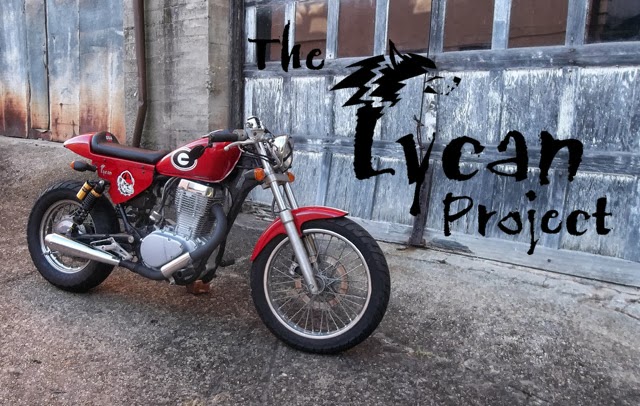Fabrication
When I removed the stator cover I damaged the gasket on that side of the bottom end. I have orderd replacements for both gaskets left and right. The damaged gasket resulted in a pretty significant oil leak at the point of damage. I removed the stater cover again and replaced the gasket there.
Notice bare areas where gasket broke loose.
Below you will see an outline of my expenditures so far.
Project cost so far:
LS650 Purchase--------$500.00
Clymers Manual --------$54.00
Starter--------------------$149.00
bottom end gasket kit---$19.00
Steel Stock Lowe's-------$28.00
MotorMounts Ebay------$21.00...............Total $771.00
One item of the steel stock I bought at Lowe's was a 12" X 24" sheet of 22 gauge rolled steel. This will be strong enough to hold the battery and I can cut it with a large pair of sheers. I used the same process that I showed in an earlier post when I made the pattern. The pictures below show the semi completed box. The holes are for mounting and locating the rectifier and starter solenoid. I will need to weld the front corners for added strength but it will suffice as is for fitment on the bike.
The first item that became glaringly obvious was that the negative battery lead would not reach the batter in it's original location. I was able to solve this problem by moving the lead to the left rear motor mount and reusing one of the bolts for the old battery box to connect it.
The leads to the battery connected. By locating the starter solenoid on the bottom of the box it was easy to route the positive lead.
Lots of wires!
That is a little better. Good not great.
I am going to fess up here, I borrowed the locations as well as the basic design for this box from pictures and videos on other sites to modify the Suzuki Savage. Some things are different and I did modify some aspects for ease of manufacture. When I cut the battery box I used the entire 24" length of the 22 g steel. this allowed me to extend the rear section further up between the frame. My intention was to use this as a kind of fender over the rear wheel. In the photo below you can see this will be a great place to locate the electronic ignition box. You can also see the mounting location for the rectifier and the starter solenoid.
This is the bike running in the new configuration. Click on the highlighted youtube link. For a bike that is 27 years old I am pretty pleased so far. I still have a small oil leak on the valve cover but there is no smoke and the moter seems to run fairly smoothly.
<iframe width="480" height="360" src="http://www.youtube.com/embed/H6jFKJOept8" frameborder="0" allowfullscreen></iframe>
Below is a new acquisition for the shop. I will have to remove the front forks at some point and this little lift I picked up on Craigslist should be just the ticket.
In the real world I dabble in Screen Printing and Embroidery as one of our side businesses. Below is the logo I worked up for a shirt and cap. I can now look like such a PRO when I am working on the bike. Go ahead laugh. As Billy Crystal said, "It is better to look good than to be good!"
Good is a relative term.

.jpg)
.jpg)
.jpg)


.jpg)
.jpg)
.jpg)
.jpg)
.jpg)
.jpg)



.jpg)



.jpg)
.jpg)
.jpg)
.jpg)

.jpg)
.jpg)
.jpg)
.jpg)
.jpg)
.jpg)
.jpg)
.jpg)
.jpg)






.jpg)
.jpg)



.jpg)
.jpg)
.jpg)

.jpg)
.jpg)
.jpg)
.jpg)
.jpg)